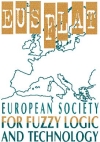|
Size: 2918
Comment:
|
Size: 3266
Comment:
|
| Deletions are marked like this. | Additions are marked like this. |
| Line 1: | Line 1: |
| <<Include(ISCAMI/menu)>> | |
| Line 5: | Line 6: |
| General info about Bratislava | |
| Line 7: | Line 7: |
| Many useful facts can be found on official site. | [[http://maps.google.com/maps/ms?ie=UTF8&hl=en&msa=0&msid=117192428011800365995.000485a35c24ffb814571&ll=48.154291,17.117214&spn=0.019096,0.042529&z=15&iwloc=000485a39201e35f76938|Map of the location]] available. == General info about Bratislava == Many useful facts can be found on the [[http://www.bkis.sk/en/native-tourist/practical-informations/basic-facts-about-bratislava/|official site]]. |
Venue
Conference place
ISCAMI 2010 will be held at the Faculty of civil engineering, Slovak university of technology in Bratislava. More information will be available early before the conference.
Map of the location available.
General info about Bratislava
Many useful facts can be found on the official site.
The town lies at the foot of the Small Carpathians and spreads out over 367.5 km2 on both sides on the largest European river, the Danube. With a population of 425 459 (2005), it is the largest town in Slovakia. Bratislava has been the capital of the Slovak Republic since January 1, 1993, as well as the seat of the presidential offi ce and the highest state offi ces, foreign embassies and the cultural centres of several countries. Its most important industrial sectors are the petrochemical, automotive, mechanical engineering, electro-technical and food industries. The quality of life of the inhabitants of Bratislava reaches the European average, and the unemployment rate is under 4%.
The place where Bratislava lies today has been a crossroads for long-distance trade routes since times immemorial. The Celts, Romans, Germans and Slavs all lived here. Its greatest heyday was a period of almost 300 years from the mid 16th century, when the town became the coronation place of the Hungarian kings. Important aristocratic Hungarian families built their residences here, trade developed, and the most important artists of the time were guests here: Mozart, Haydn, Beethoven, Liszt. People of Slovak, German, Hungarian, Jewish and other nationalities all lived alongside each other. Each nation named the town in its own way: in the 13th century, the Germans named the town after the castle – Pressburg, which the Slavs changed to Prešporok, and the Hungarians used the name of Pozsony. Bratislava has been the offi cial name of the town since 1919.
Many cultural institutions have their headquarters here: the Slovak National Gallery, the Slovak National Museum, the Slovak National Theatre and the Slovak Philharmonic. As well as national cultural institutions, the City Museum and the Bratislava City Gallery, many other museums can be found here which display the art of the great masters, as well as contemporary art.
Wine-making has always fl ourished in the surroundings of the town, and there are almost 1000 ha of vineyards here. Bratislava wines were an export item as early as in the Middle Ages and were served at the tables of European royal courts. The tradition of good food and great wine has returned once more to Bratislava.
With its eight universities and 60,000 students, Bratislava is a young person’s town. You can feel it when you go out on the town in the evening. The renovated town centre is crammed with pubs, stylish cafés, restaurants, clubs and bars. The inhabitants of Bratislava like to have fun and it is easy to get talking to them. So welcome to Bratislava!


